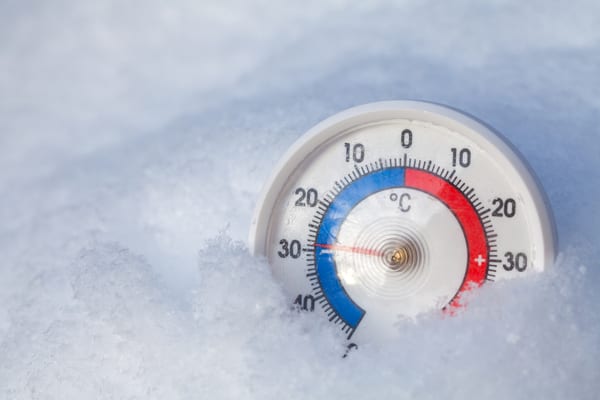Extreme Cold means below normal temperatures combine with strong winds (wind chill) that result in the thermostat falling below -27 °C. Brr! Of course temperatures this extreme come with more health risks, such as:
Windburn – Skin becomes very dry, red, sore and itchy.
Frostbite – Skin of the extremities (hands, feet, nose) turns yellowish or white.
Respiratory Tract Irritation
Hypothermia – Body temperature drops below 35 °C, causing shivering and, with prolonged exposure, euphoria, convulsions, coma and death.
Yeah, those things are nothing to sneeze at. The good news is, a taking just a few preventative measures could save your life:
Stay Indoors. Children and people with asthma or heart conditions should stay indoors.
Cover Up. Cover up as much as possible, especially your head and extremities. Protect your face with sunscreen or wear a scarf or mask, and keep your back to the wind.
Wear Layers. It might seem obvious, but piling on a few extra layers is a great way to stay warm, especially if you have to be outside, and keeping your core warm (your trunk, where the majority of your vital organs are housed) is especially important when temperatures dip below freezing, so try wearing an extra shirt or two under your coat. For active people who love wearing leggings, try swapping them out for long underwear. Several hiking-gear companies make long underwear that has the same look as leggings and will help keep you warm. A bonus: Most long underwear is meant to dry quickly, so leftover snow and slush won’t leave your legs damp.
Indulge in Foods That Help You Keep Warm. You already know that eating healthfully in the winter is important to fend off colds and the flu, but did you know it might help keep you warm, too? According to Columbia Health, eating extra healthy fats during the winter can help rev up metabolism, which in turn heats the body. If your New Year’s resolution was to drop a few pounds, don’t worry — you can always skip the extra fat and try eating warmer foods and drinks. Try soups, spicy foods, hot coffee and teas to fend off the chill!
Don’t Drink Alcohol. Although alcoholic beverages might make you feel warm, they actually decrease your core temperature and can be dangerous during winter months. A recent study by the Army Research Institute of Environmental Medicine found that alcohol reverses some reflexes that control body temperature, especially the body’s ability to shiver. Alcohol can also make you sweat, even when it is cold, which can lower core temperatures even more.
Keep Moving. If you’re outdoors, find shelter and keep your body moving. And if you have to work outdoors, go inside regularly to warm up and avoid frostbite.
Practice the Buddy System. Don’t go out alone, especially in remote areas.
Keep Your Toes Toasty. Hypothermia usually begins in the hands and feet, so keeping your toes warm is important. Whether you’re walking to work or just around the block, make sure to wear sturdy, insulated shoes that will help prevent slips on slick surfaces and keep your feet dry. Also, consider wearing an extra pair of socks. You can also take a tip from skiers and pick up some of those hand and foot warmers to slip inside shoes and gloves.
Sunglasses… Even in the Winter. If you’re walking in the snow during the day, wear sunglasses to protect eyes from the glare.
Be Aware and Be Visible. If you are walking at night, make sure to dress in colors other than white and to wear something reflective on your person to alert drivers to your presence. Avoid walking too close to roadways, especially near icy areas where drivers may lose control of their vehicle.
Watch Out for Furry Friends. You might be jealous of your dog or cat’s fur coat when temperatures drop, but they need to be kept warm, too. Experts say that during these kind of extreme cold days, dog walks should be limited to 10 minutes, and when you return, give them a rub down to get ice and snow out of their sensitive paws.
Pets should really be brought inside during extreme conditions. If you have or know of animals that can’t come inside (such as farm animals or neighborhood feral cats that you care for), provide enough bedding and insulated shelter for them to keep warm. If temperatures are below freezing, remember to check their water and replace it if it has frozen.
—
Photo Credit: Dmitry Naumov / Shutterstock.com
